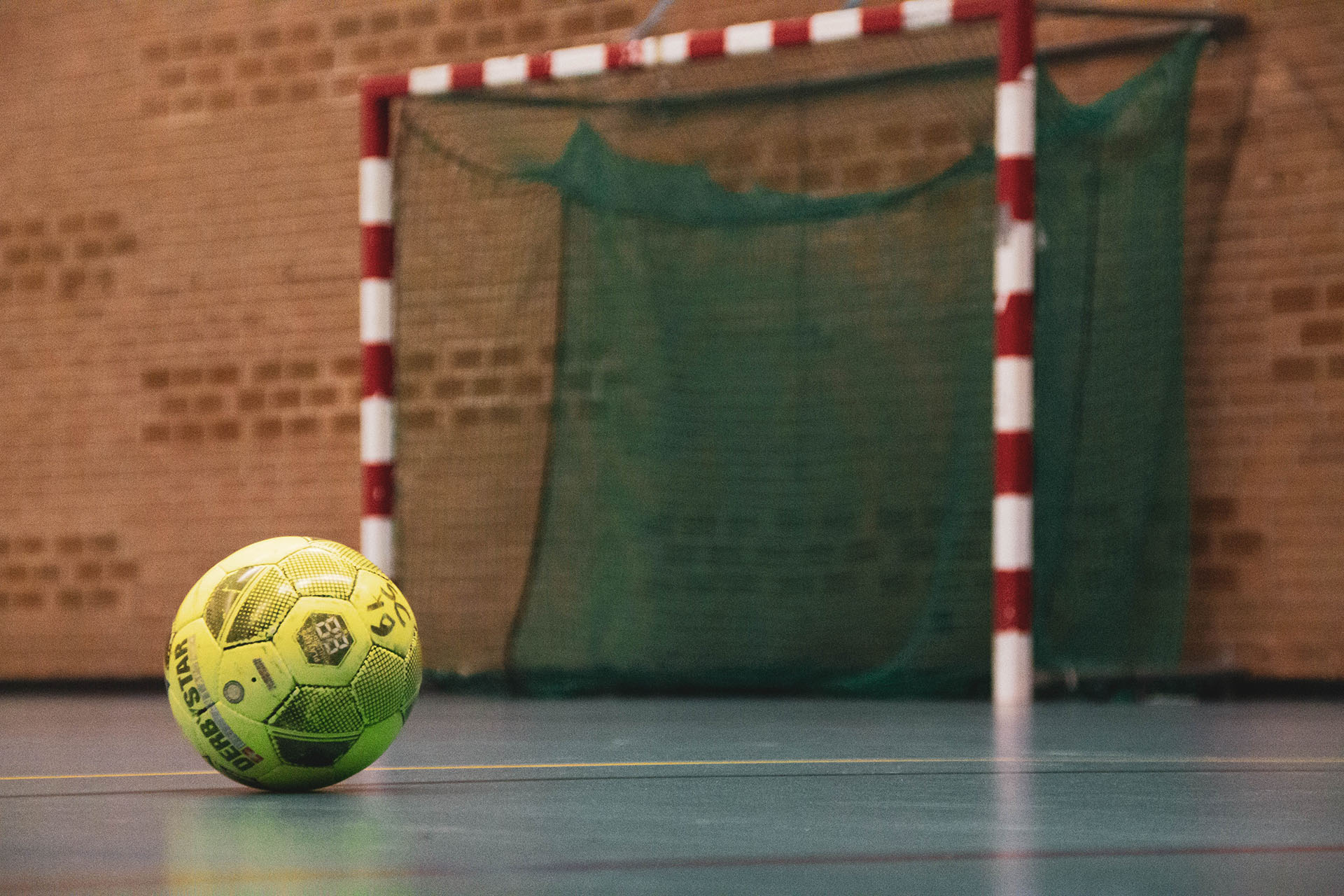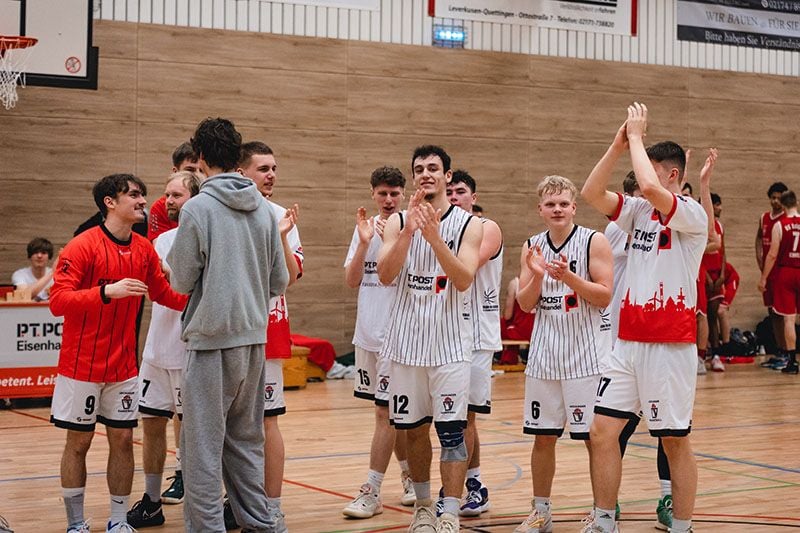The field is smaller, the goals are, and even the ball. But there are a lot of other rule differences to "big brother" football that answer the question "What is futsal?
Number of players, changes, playing time: The futsal basics
In futsal, two teams face each other with five players (four field players and one goalkeeper). Nine additional players per team may be brought into the game. There is no limit to the number of substitutions, as is the case with football. Each player may be substituted in and out as often as desired. Substitutions may be made on the fly. There is no need to wait for the game to be interrupted. However, the substitutions may only be made in a defined changing zone and the substituted player may not enter the field until the substituted player has left the field.
The futsal field corresponds to a handball field (40 x 20 metres). The goals are also the same size as classic handball goals, measuring 3 x 2 metres. And there are a few more rules that are also familiar from handball: two referees officiate the game on an equal footing. The coaches of both teams have one one-minute time-out per half-time for speeches. This time-out can only be taken when the team has possession of the ball and must be announced to the timekeeper beforehand.
The game is played in two halves of 20 minutes each. In between, there is a break of a quarter of an hour. So the ball rolls for a total of 40 minutes - and that is effectively how long it is in play. Because as soon as there is an interruption, the time is stopped. This means that there is no extra time.
Only four seconds: Futsal needs speed and technique
In general, the futsal rules set a certain tempo for the sport. They demand that the game be continued quickly. The ball must be played in four seconds when it is thrown out, or when corner kicks, free kicks or penalty kicks are taken. The same applies to the so-called kick-in. There are no throw-ins or roll-ins, as in football and other indoor football variants (where the game is sometimes even played with a cushion). If the ball lands out of bounds, it is kicked in again.
And since we are talking about the ball: in senior football, a size 5 ball is used, whereas the futsal ball is one size smaller (4) and ticks less so that it is easier to control on the indoor floor. To have better control, players often guide it with the sole.
If the goalkeeper has passed the ball to a teammate, he is only allowed to touch it again in his own half if an opponent has been on the ball in the meantime. In general, the goalkeeper may only hold or guide the ball in his own half (in the penalty area) for four seconds, after which the referee decides on an indirect free kick. A repeated back pass to the goalkeeper, which football fans in the stadium like to acknowledge with whistles, is therefore not possible in futsal.
In the opponent's half, however, the goalkeeper can be used as a fifth field player and may then pass the ball as often and as long as he wishes. As in football, the goalkeeper may only touch the ball with his hand in the penalty area (in futsal it is the 6-metre circle).
Fouls and penalties in futsal
If he plays the ball with his hand outside the penalty area and thus prevents a clear goal-scoring opportunity, he is shown the red card. However, this does not have the same consequences as in football. If the referee shows a player red in futsal, he is sent off and is no longer allowed to play. Unlike in football, his team does not have to play the rest of the game in a shorthanded situation, but may replace him with another player after two minutes. If the team concedes a goal while shorthanded, the substitute may enter the field before the two minutes have elapsed.
The yellow card is used by the referees to caution for fouls, handball or unsportsmanlike conduct. Foul play in futsal is generally assessed in the same way as in football. There is, however, one special feature in tackling: straddling is only allowed to block a ball. They may not be played directly against the opponent. This is to minimise the risk of injury.
Team fouls in futsal
And since we were talking about parallels to handball: The makers behind the futsal rules have also used the basketball rules: there are team fouls. All direct free kicks are added up during a futsal match. If a team has committed five fouls within a half, there is a direct free kick for the opponent for each additional foul. This is taken from the ten-metre penalty spot. If the foul occurred closer to the goal, the free kick is taken from that point. Unless the player has been fouled inside the 6-metre area: Then, of course, there is a penalty kick, which is taken from 6-metres. In the case of team fouls, the opponent may not put up a wall. The shooter must finish directly.
Goals may be scored from anywhere on the pitch during the match - but not after a kick-off, kick-in or goal clearance and, logically, not after an indirect free kick. There is no offside, unlike in large-sided football.
The question "What is futsal?" can therefore be answered with a mixture of several sports. This is also evident in the futsal rules.






.png)









































































